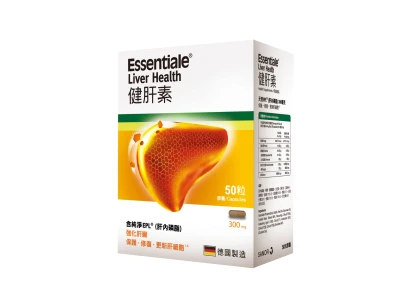
NON-ALCOHOLIC FAT ACCUMULATION IN LIVER
People always think that liver health is mainly related to alcoholism. While alcohol remains a major cause of severe liver damage, studies have pointed to other factors associated with unhealthy lifestyles. As a result, a new condition called non-alcoholic liver fat accumulation, which is caused by unhealthy lifestyle instead of alcohol consumption. (1)
Over the past two decades, non-alcoholic liver fat accumulation has become one of the most common liver problems in the world. According to current estimates, affects 25% of the global population. This means that one in four adults, or about 1.3 billion people worldwide, will be affected by the problem. (1)
THE CHANCE OF HAVING NON ALCOHOLIC FAT ACCUMULATE IN LIVER IS HIGHLY ASSOCIATED WITH UNHEALTHY LIFE STYLE
CAUSES
Non-alcoholic liver fat accumulation is generally considered a serious health condition.
Research on the causes of nonalcoholic hepatic fat accumulation is still ongoing, but these factors can be divided into genetic and external factors. Risk factors for nonalcoholic liver fat accumulation include:
SYMPTOMS
The following symptoms are often associated with nonalcoholic liver fat accumulation:
Weakness, fatigue
Inability to focus
Malaise
Lack of appetite
Sleep disorders
Pain in the right subcostal region (4)
HOW TO BE DIAGNOSED?
The diagnosis of non-alcoholic fat accumulation in the liver is based on clinical interviews with patients, laboratory findings, and imaging findings. Diagnosis is made by the histology of a sample obtained from a liver biopsy, which is confirmed at the time of examination. At the time of diagnosis, other causes of non-alcoholic fat accumulation in the liver, such as excessive alcohol consumption, are excluded.
In assessing the progression of non-alcoholic fat accumulation in liver, certain non-invasive diagnostic tests may be appropriate, such as the NFS score, which analyzes 6 factors: age, BMI, laboratory results: blood glucose, AST and ALT, platelet count, and white blood cell levels.
HOW TO TREAT?
Preferred treatment usually involves the following procedures:
HOW TO PREVENT?
In the non-alcoholic fat accumulation in liver prevention, you should concentrate mainly on having a healthy lifestyle and eating habits:
HOW TO REVERSE?
Lifestyle largely influences and contributes to non-alcoholic fat accumulation in liver. Weight loss can be caused by changing dietary habits and increasing exercise while reducing negative effects on the liver. Exercise has been shown to be effective in reducing fat in the liver. In addition, laboratory tests have shown that weight loss has a positive effect on liver health indicator, with weight loss greater than 10% leading to remission (reversal) of non-alcoholic fat accumulation liver in most people. (3)
START CARING FOR YOUR LIVER TODAY WITH ESSENTIALE®
ESSENTIALE®
Essentiale® contains 300 mg essential phospholidpids (EPL) per capsule. It is useful to protect, improve and repair liver cells/hepatocytes.
-
Perumpail, B. J., Khan, M. A., Yoo, E. R., Cholankeril, G., Kim, D., & Ahmed, A. (2017). Clinical epidemiology and disease burden of nonalcoholic fatty liver disease. World Journal of Gastroenterology, 23(47), 8263–8276
-
Shiha, G. et al. Redefining fatty liver disease: an international patient perspective. The Lancet Gastroenterology & Hepatology; VOL 6, ISSUE 1, P73-79, JANUARY 01, 2021
-
Gietka J. Klapaczyński J., Enfermedad del hígado graso: diagnóstico y tratamiento, https://podyplomie.pl/medycyna/23439,stluszczenie-watroby-diagnostyka-i-leczenie, Fecha de acceso 29.03.2019.
-
Sterczyński R. Tratamiento de la enfermedad del hígado graso no alcohólico: cambiar la dieta es la clave. Pulso de la Medicina https://pulsmedycyny.pl/leczenie-niealkoholowej-stluszczeniowej-choroby-watroby-kluczowa-jest-zmiana-diety-982340 Fecha 12.05.2021
-
Strzeszyński Ł. Diagnóstico y tratamiento de la enfermedad del hígado graso no alcohólico; Medicina Práctica Gastrología www.mp.pl/gastrologia/wytyczne/80328,rozpoznawanie-i-leczenie-niealkoholowej-stluszczeniowej-choroby-watroby Fecha de acceso 12.05.2021
